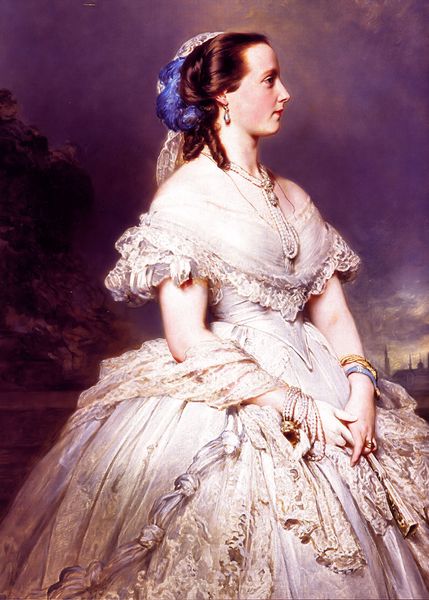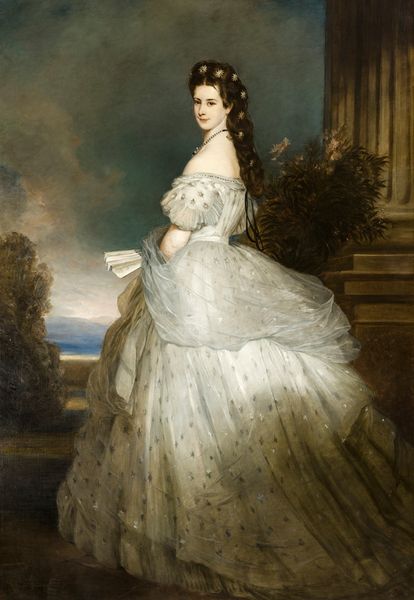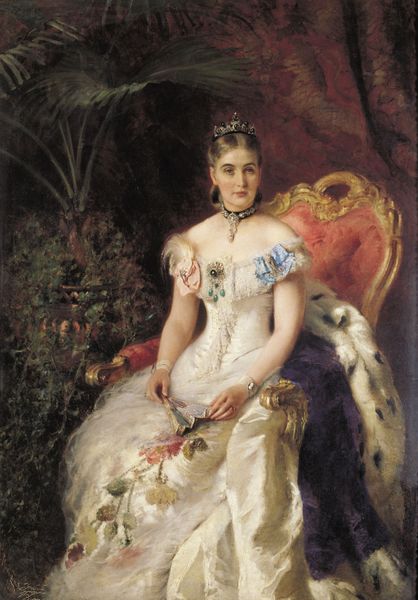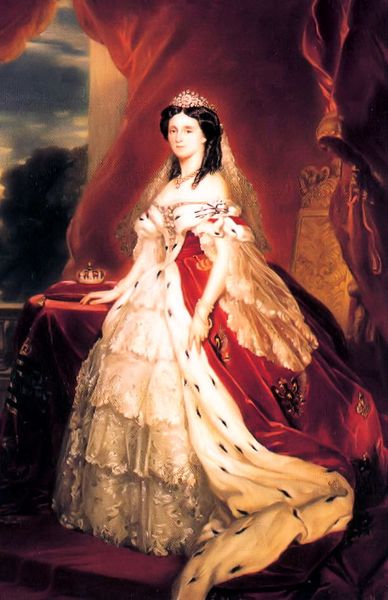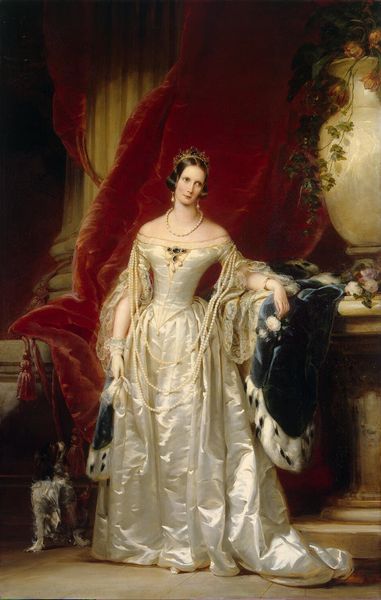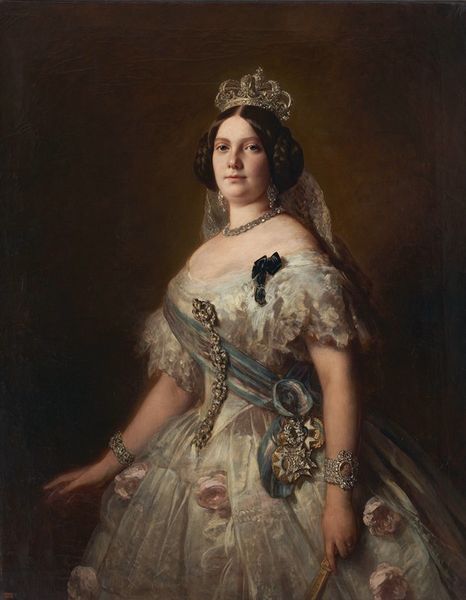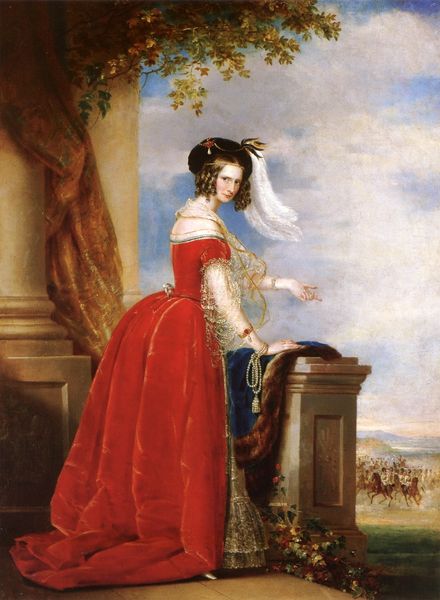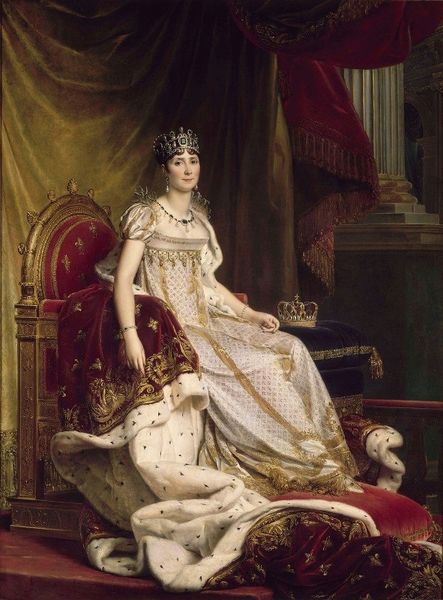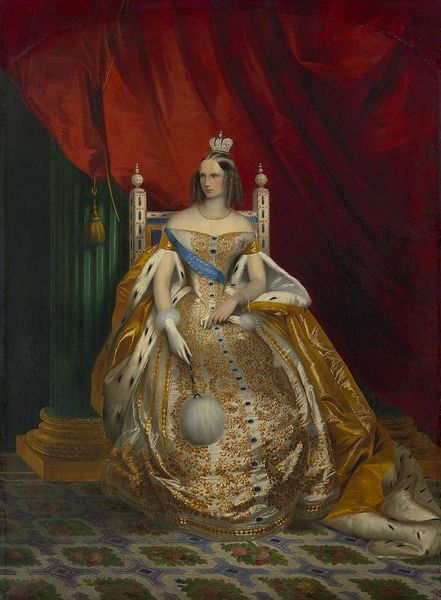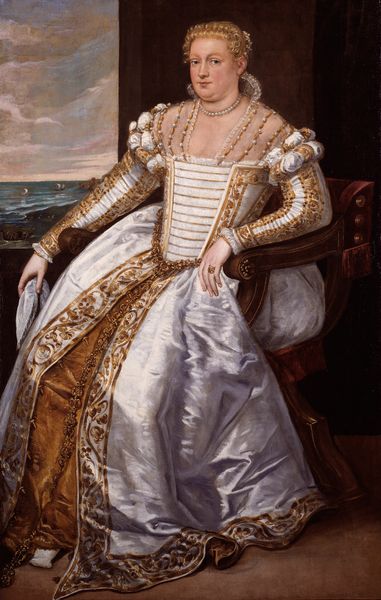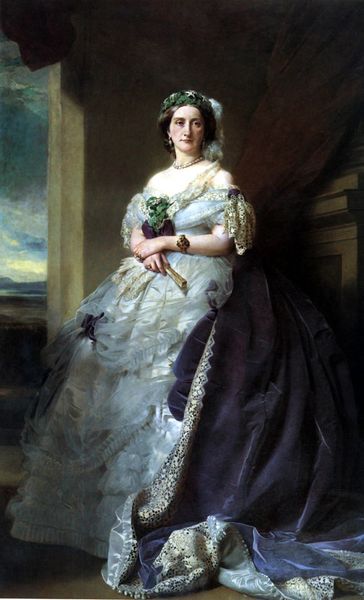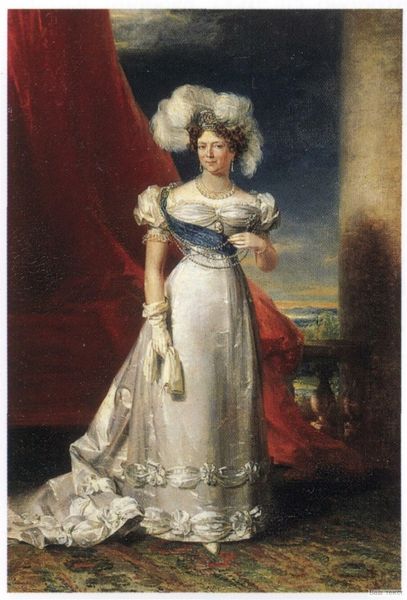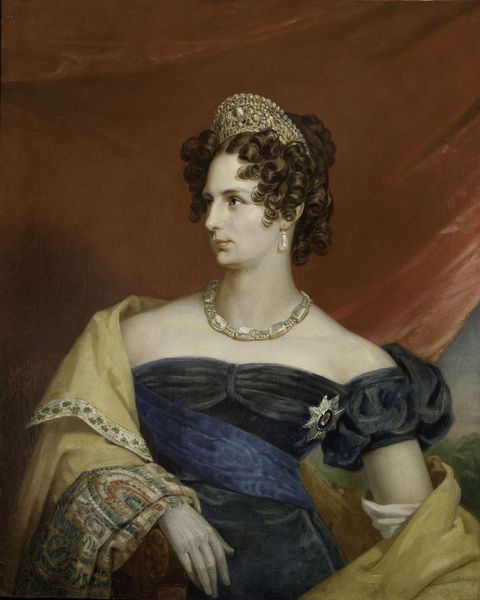
oil-paint
#
portrait
#
neoclacissism
#
oil-paint
#
oil painting
#
history-painting
#
portrait art
Copyright: Public domain
Editor: So this is George Dawe's 1826 oil painting, "Empress Alexandra Feodorovna at the Coronation of Her Husband." It’s regal, of course, but also strangely melancholic. All those trappings of power… what do they really signify? What do you make of this portrait? Curator: Well, beyond the surface of Neoclassical portraiture, what resonates with me are the symbols embedded in the imagery. Look at the ermine robe; its whiteness denotes purity, traditionally linked to concepts of divinity, authority, and the incorruptible nature of monarchy. Editor: That’s interesting. The city behind her seems almost dreamlike, though. It gives this portrait a less idealized feel, perhaps? Curator: Precisely! Notice the column in the background – architectural elements often represented strength and stability but may remind contemporary viewers of imperialism and colonial expansion. The crown she wears... Does it empower her, or imprison her? What happens to a person's sense of identity when encased within this weight of symbolic objects? Editor: I never thought about it that way. The portrait is meant to convey power, but the symbolism reveals potential fragility. Curator: Dawe’s portrait offers us a window into understanding how individuals grapple with identities that history and cultural memory construct. Now, knowing all of this, how does it shift your perspective? Editor: It gives a richness and complexity to something I thought was purely ceremonial. Curator: Indeed, images are seldom what they seem. There are layers of memory encoded in visual symbols waiting to be deciphered, if we care to delve deep enough.
Comments
No comments
Be the first to comment and join the conversation on the ultimate creative platform.
